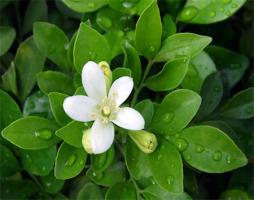How to Water a Newly Planted Tree
Planting a new tree is an exciting and rewarding experience. However, it is important to ensure that the tree is adequately watered to encourage its healthy growth. Watering a newly planted tree can be tricky, as overwatering or underwatering can be detrimental to its survival. In this article, we will discuss some tips on how to properly water a newly planted tree.
Tip 1: Consistency is Key
One of the most important aspects of watering a newly planted tree is consistency. The tree should be watered regularly, depending on the climate and soil type. In general, trees require one inch of water per week, which can be spread out over multiple watering sessions. However, it is important to avoid overwatering, as this can cause the roots to rot and the tree to die.
Tip 2: Timing is Everything
The timing of watering a newly planted tree is also critical. It is best to water the tree in the early morning or late afternoon, as this allows the water to soak into the soil before the heat of the day. Avoid watering during the hottest part of the day, as this can cause the water to evaporate before it can be absorbed by the roots.
Tip 3: Water Deeply
When watering a newly planted tree, it is important to water deeply. This means that the water should penetrate down to the roots of the tree, rather than just wetting the surface of the soil. One way to ensure deep watering is to use a soaker hose or drip irrigation system, which delivers water directly to the roots. Alternatively, watering by hand with a hose can be effective, but take care not to water too quickly, as this can cause the water to run off and not soak in.
Tip 4: Mulch is Your Friend
Mulch can be a great tool for aiding in watering a newly planted tree. Mulch helps to retain moisture in the soil, which can reduce the need for frequent watering. In addition, mulch can help to regulate soil temperature, which can be especially important in areas with extreme temperatures. When applying mulch, be sure to leave a small gap around the trunk of the tree to prevent moisture buildup and potential rot.
Tip 5: Pay Attention to Signs of Over or Underwatering
Finally, it is important to pay attention to signs that the tree is either over or underwatered. Signs of overwatering include yellowing leaves, wilting, and a foul odor. Signs of underwatering include wilting, brown or yellow leaves, and dry soil. If you notice any of these signs, adjust your watering schedule accordingly.
In conclusion, watering a newly planted tree can be a delicate process, but it is critical for the tree's health and growth. By following these tips for consistency, timing, deep watering, mulching, and paying attention to signs of over or underwatering, you can help your new tree thrive for years to come.

 how many times do yo...
how many times do yo... how many planted tre...
how many planted tre... how many pine trees ...
how many pine trees ... how many pecan trees...
how many pecan trees... how many plants comp...
how many plants comp... how many plants can ...
how many plants can ... how many plants and ...
how many plants and ... how many pepper plan...
how many pepper plan...































